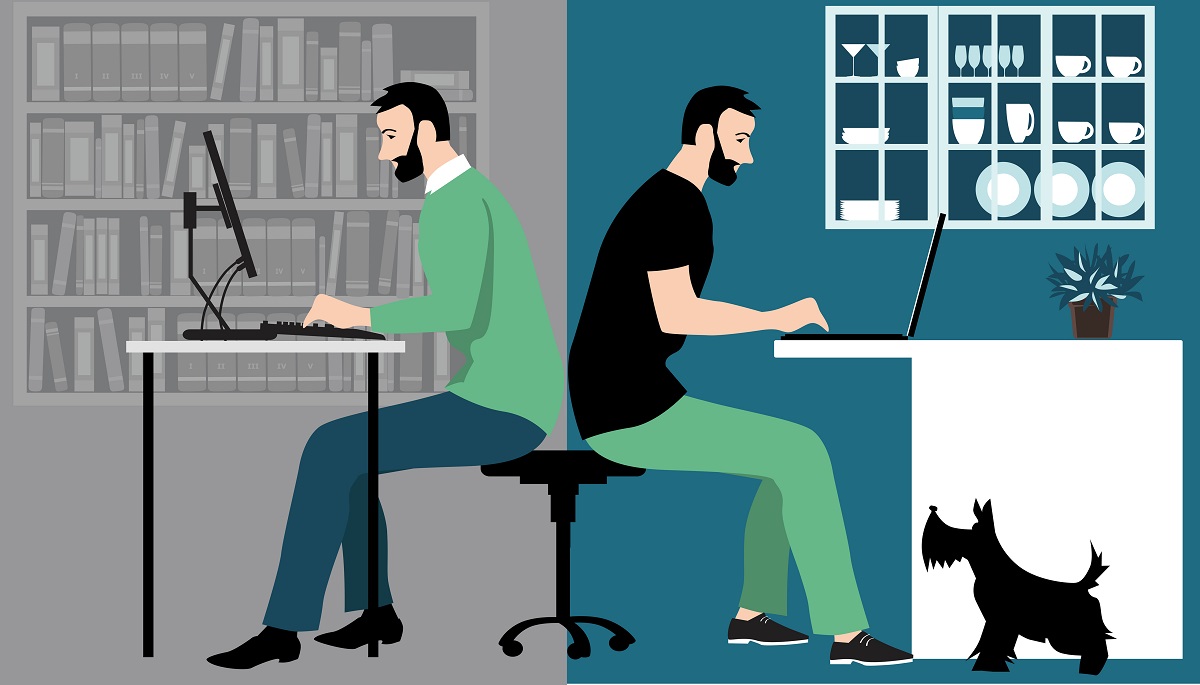Back when the pandemic was young, Frost & Sullivan estimated that six times more people would work from home when the new normal—whatever that looks like—set in. All that conferencing technology companies adopted rapidly to facilitate mass remote work—cameras, videoconferencing systems, conference phones, collaboration software? That’s going to become a permanent fixture of operations, whether people work from home, in the office, or both. And when technology becomes a permanent part of workers’ lives, they tend to notice it more.
Because of how prevalent they’ve become, conferencing systems have morphed into lifestyle devices, blending form and function to achieve seamless, clear, easy collaboration. In a 2019 report, Re-designing the Aesthetic of the Future, experts at global consultancy Gemic wrote, “When our devices are designed as black boxes, it does nothing to alleviate our lack of understanding of the technology we are intimately relying on…. We are in need of a new visual and material language that would help us feel at home with our devices.”
As companies reimagine their own workspaces to promote collaboration in a new era of hybrid work, they’ll want to keep a few things in mind.
Yes, Technology Design Matters
We know instinctively, every time we pick up our smartphone, that design matters. We’re also drawn to the slimmest TVs, or the coolest control panels, or the sleekest stereo speakers. In terms of collaboration technology, it all started with futuristic speakerphones; now it applies to videoconferencing cameras, controllers, and new all-in-one videoconferencing bars. As these technologies permeate workers’ lives—and as companies redesign workspaces to make them welcoming for returning employees—technology aesthetics are as important as furniture, lighting, interior design, and more. As the experts at Gemic put it, “The winners of the future are those who through design language and form re-forge a meaningful, positive relationship between humans and technology. It is the physical manifestations of digital ideas that shape our relationship to technology.”
Conferencing Technology Needs to Go Everywhere
Technology aesthetics would have mattered even if it weren’t for a global pandemic. But tomorrow’s workspaces will inevitably put technology design more front-and-center. Gone are the days when videoconferencing systems were relegated to conference rooms and executive offices. Video collaboration will be status quo among more workers, which means they’ll need access to ubiquitous videoconferencing technology in much the same way they’ve always required telephones—and aesthetics will matter more than ever.
The challenge will be implementing videoconferencing and collaboration in more, different spaces. How do you take a new hybrid office space and incorporate conferencing into all the necessary rooms—big and small conference rooms, individual offices, shared offices designed for safe spacing, etc.? And how do you ensure the technology for all those rooms fosters the type of aesthetic that will improve employees’ relationship to the technology? These questions have been top of mind for office managers and commercial AV/IT integrators alike – who rely on AV technology manufacturing companies to provide products that meet their logistical, quality and aesthetic goals, and recommend solutions that will be effective for their workspace.
Home Tech Should Mimic Office Tech
Finally, hybrid work means the home office is an extension of the corporate office. And just as consumerization meant workers sought office technology that mimicked their personal technology—in function and design—they will now require corporate conferencing solutions in their homes, for a couple reasons.
First, having at home the same technology aesthetics as they have at the office serves to reinforce employees’ relationship to that technology. It’s a visual representation of the hybrid office experience companies are seeking to create. Second, because many workers will spend much of their time working from home, they need office-caliber technology to improve their conferencing and collaboration. For example, as many workers learned during the pandemic, videoconferencing is great, but high-quality audio is crucial to good communication. Imagine if every remote employee calling into a meeting from their smartphone could use a personal-sized version of a futuristic-looking, conference room speakerphone—with integrated Bluetooth, HD audio, full-duplex sound, and omnidirectional microphones (in case they want to stand up and move around their home office). This makes the hybrid worker is as effective in meetings at home as in the office.
As the experts at Gemic put it, “The measure of good design is how effective and simple it is.” To the extent that well designed conferencing technology makes workers more effective and improves their relationship with their devices—at home and in the office—it will play a key role in the success of hybrid work.
Torbjörn Karlsson is Product Manager at Konftel, a collaboration endpoint solutions company.










